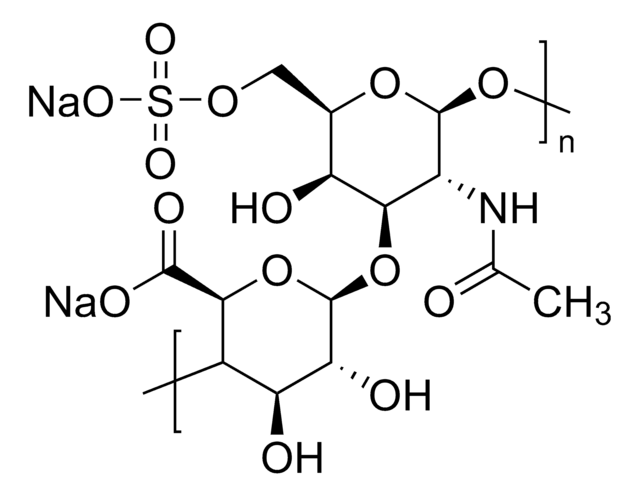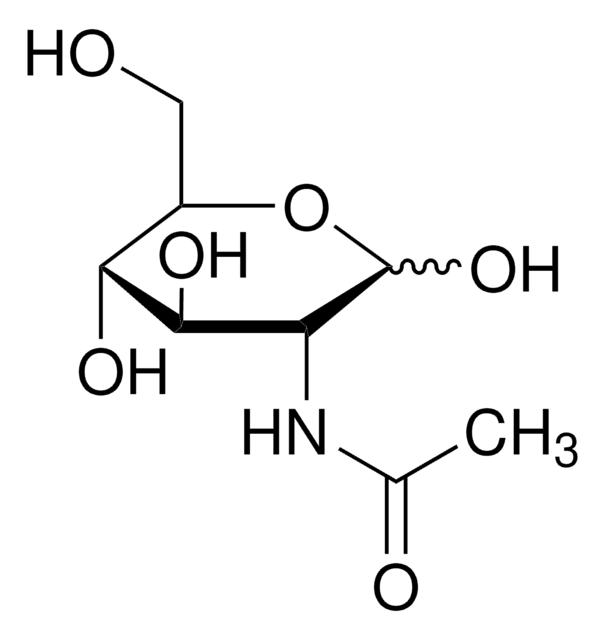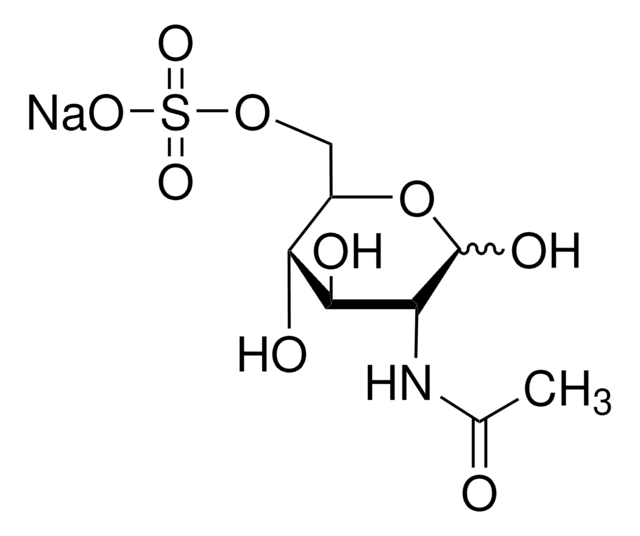Wichtige Dokumente
11631
D-Glucosamin-3-sulfat
≥98.0% (TLC)
Synonym(e):
GlcN-3S
About This Item
Empfohlene Produkte
Assay
≥98.0% (TLC)
Form
powder
Optische Aktivität
[α]/D 55.0±2.0
Methode(n)
thin layer chromatography (TLC): suitable
Lagertemp.
−20°C
SMILES String
N[C@H]1C(O)O[C@H](CO)[C@@H](O)[C@@H]1OS(O)(=O)=O
InChI
1S/C6H13NO8S/c7-3-5(15-16(11,12)13)4(9)2(1-8)14-6(3)10/h2-6,8-10H,1,7H2,(H,11,12,13)/t2-,3-,4-,5-,6?/m1/s1
InChIKey
UZUBNIPDAIVWIE-IVMDWMLBSA-N
Anwendung
Verpackung
Sonstige Hinweise
Lagerklassenschlüssel
11 - Combustible Solids
WGK
WGK 3
Flammpunkt (°F)
Not applicable
Flammpunkt (°C)
Not applicable
Persönliche Schutzausrüstung
Eyeshields, Gloves, type N95 (US)
Hier finden Sie alle aktuellen Versionen:
Besitzen Sie dieses Produkt bereits?
In der Dokumentenbibliothek finden Sie die Dokumentation zu den Produkten, die Sie kürzlich erworben haben.
Artikel
Glycosaminoglycans are large linear polysaccharides constructed of repeating disaccharide units.
Unser Team von Wissenschaftlern verfügt über Erfahrung in allen Forschungsbereichen einschließlich Life Science, Materialwissenschaften, chemischer Synthese, Chromatographie, Analytik und vielen mehr..
Setzen Sie sich mit dem technischen Dienst in Verbindung.



